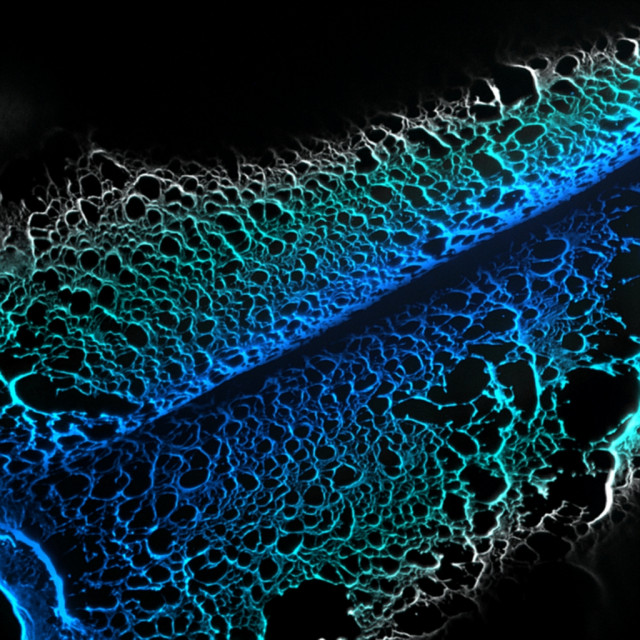
Illuminating Cell Mechanics
Description
How do we develop from single cells to complex organisms? Cues provided by a cell’s environment act as a Morse Code for differentiating cells. Using light-stiffening protein hydrogels (pictured), researchers at UCSB will uncover how dynamic mechanical signals influence stem cell differentiation.
Cells constantly monitor and respond to mechanical changes in their environment. To probe such responses our group developed the OptoGel, a collagen hydrogel capable of dynamically stiffening when exposed to light. By decorating collagen fibrils within the hydrogel with light-responsive proteins from plants, we created a biological material that stiffens when exposed to light and returns to a “soft” state in the dark. Light-induced interactions of the attached plant proteins act as dynamic crosslinks that increase the interaction between individual fibrils and ultimately stiffen the whole material. The Wilson Lab plans to use OptoGels to uncover how dynamic mechanical signals drive decisions made by stem cells during differentiation.










